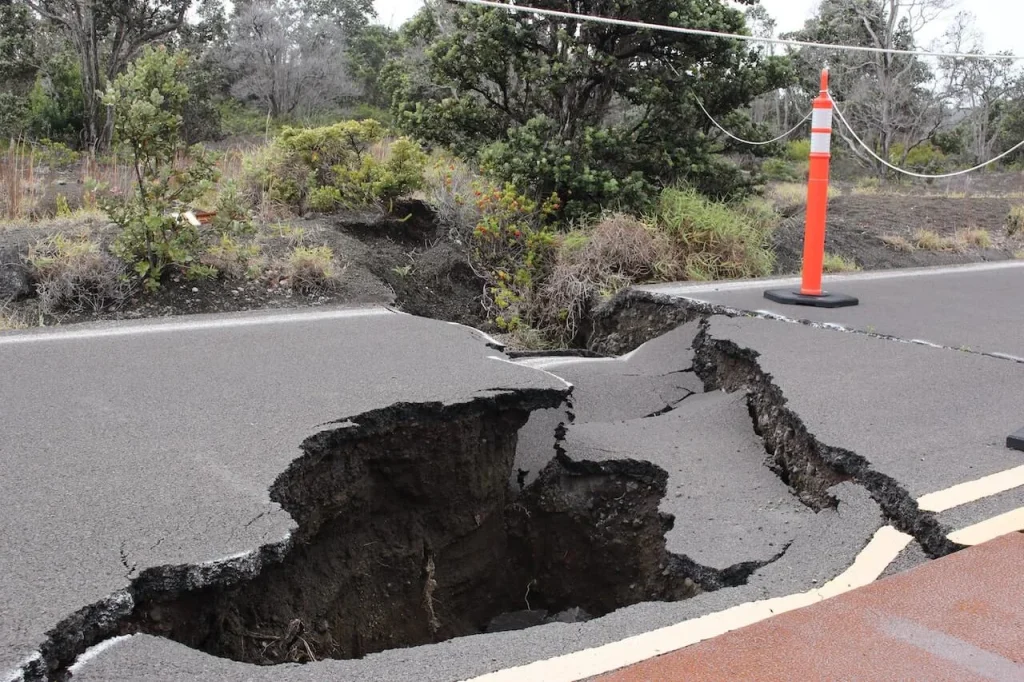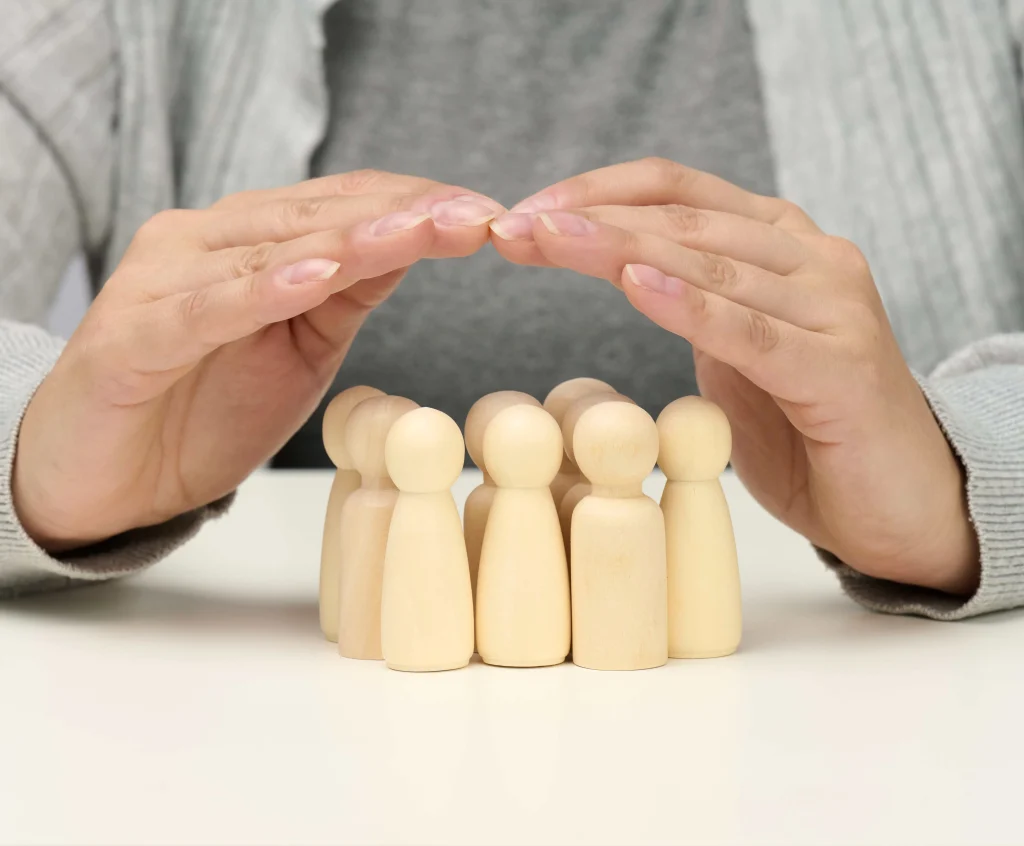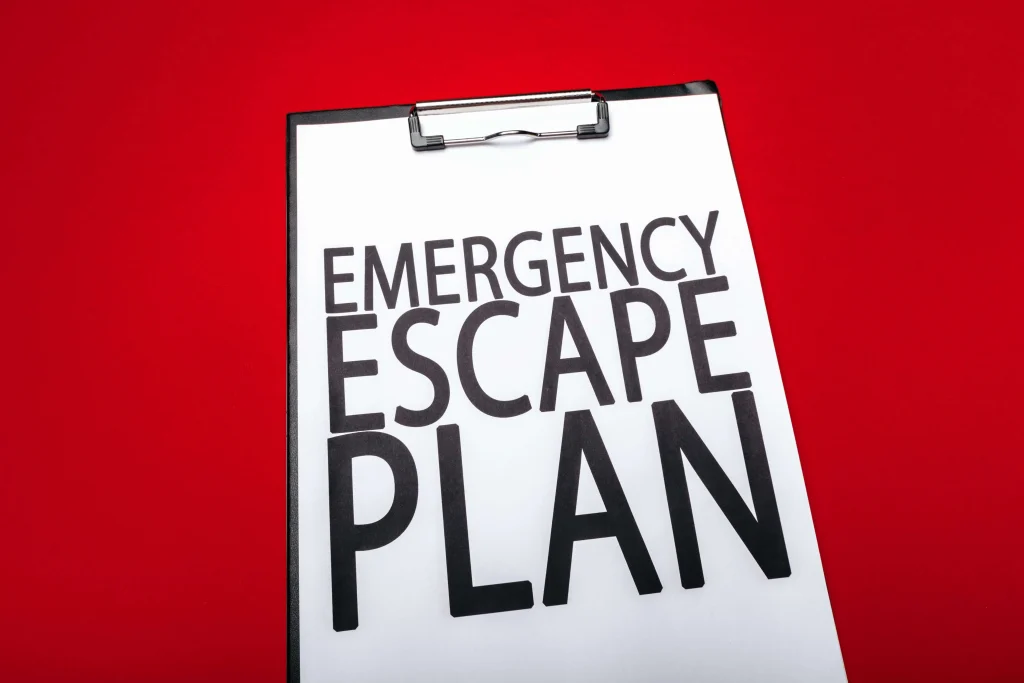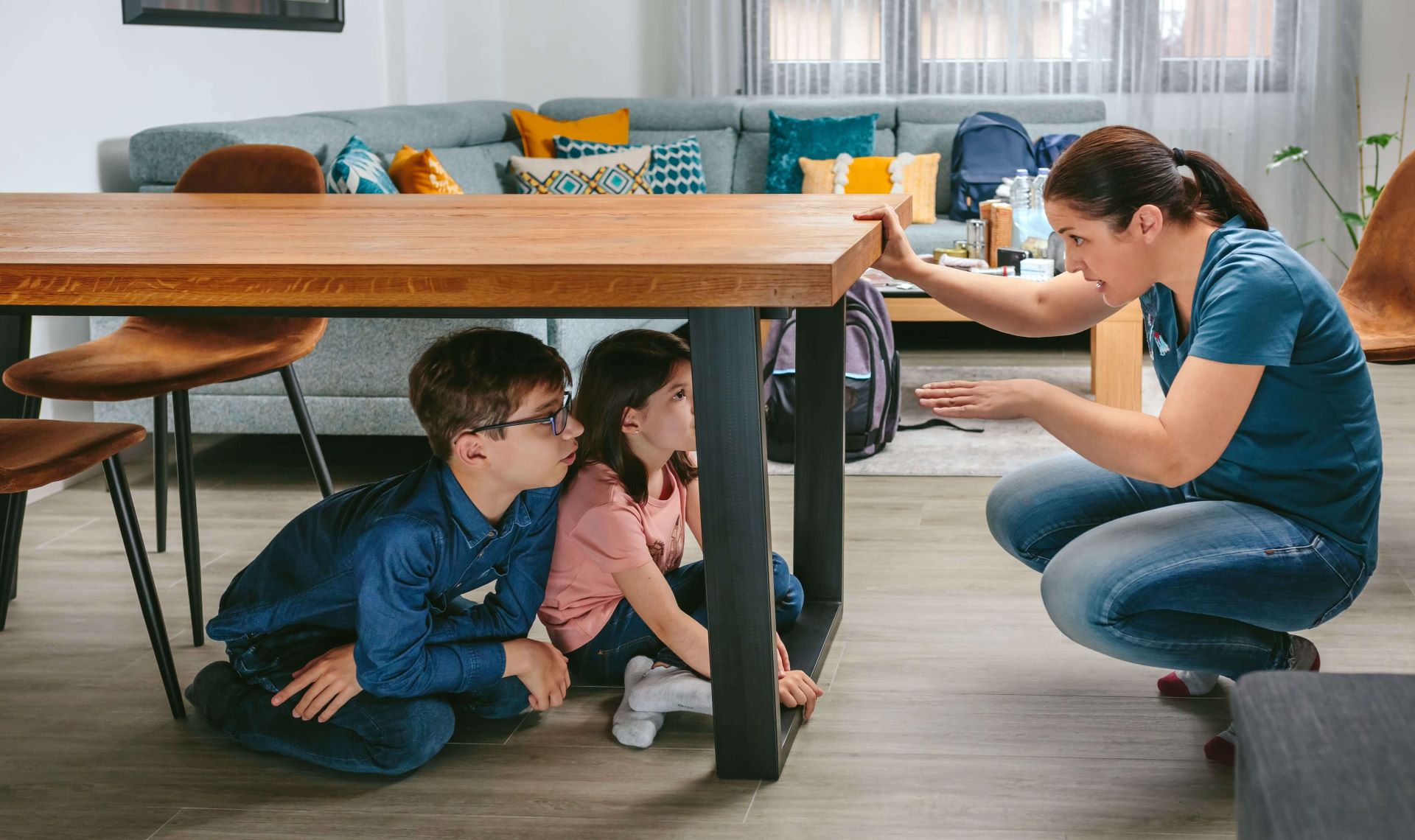In the last week of July 2022, a powerful 7.1-magnitude earthquake hit the provinces in the Northern Philippines, killing 5 people and injuring at least 130 people. The earthquake devastated more than hundreds of homes, dozens of schools, several hospitals, bridges, and historical churches. This can be put on the list of the major earthquakes that have happened in the country.
Unfortunately, this is not unusual for a country that experiences an average of 20 earthquakes a day.
At a time wherein uncertainties of natural disasters like earthquakes wreak more havoc and are rampant, this begs the question: How can you keep you and your family safe from earthquakes?
In this article, you will learn what to do before, during, and after earthquakes to reduce your family’s risk of injury. You will also learn how to earthquake-proof your house and lot for sale in Cavite and ensure little to no minimal damage to your valuable house.
What Is an Earthquake?

Before delving into how you can keep your family safe from earthquakes, you first need to know what exactly an earthquake is so that you can better gauge how to prepare for it.
In simple terms, an earthquake is the shaking of the ground caused by the sudden movement of tectonic plates below the earth’s surface. Earthquakes occur anywhere in the world, but they are more frequent and intense near fault lines. It feels like the rumblings when you are near an LRT train station, but in this case these tremors and rumblings you feel are dangerous.
There are two types of earthquakes: volcanic earthquakes and tectonic earthquakes. Tectonic earthquakes are produced by sudden movement among the fault plane and boundaries. Volcanic earthquakes occur when a volcano erupts.
Earthquakes’ seismic energy is generally measured via a Richter scale which determines how big and severe a certain earthquake is. They can range in intensity from very weak ones that cannot be felt to those that are powerful enough to damage infrastructure and destroy cities.
It starts from 0-2.0 which is classified as micro and is never felt. The earthquake magnitude of the one last July 2022 was 7.1. It is classified as a Major earthquake where it can spread to further areas and cause severe damage. To put this into perspective, the highest-ever recorded earthquake in the Philippines was the tectonic earthquake in 1976, in the Moro Gulf with a magnitude of 8.0. The most powerful earthquake ever recorded was in 1960 in Chile with a magnitude of 9.4-9.6. It created seismic waves which affected the Philippines and Japan.
Why Do You Need to Keep Safe From Earthquakes?
Apart from Palawan and Sulu (which are located in different fault systems), there are no earthquake-free zones in the Philippines. A local news agency revealed that all parts of the country have experienced approximately 25,100 earthquakes with an average magnitude of 4.2 in the last 400 years.
This is because the country sits at 5 active earthquake fault lines. These faults allow blocks of the Earth’s crust to move relative to each other most usually in the form of an earthquake.
But aside from that, the Philippines is located at the “Pacific Ring of Fire,” making it more prone to seismic activities and volcanic eruptions. When an earthquake occurs, nearby active volcanoes may also be triggered to erupt, thus aggravating the effects of such disasters.
With that said, you need to be sure that your home is located in a relatively “low-risk” earthquake area.
With its numerous awards for being a renowned and trusted real estate developer, Crown Asia ensures that its properties are strategically located in areas that not only provide world-class experience but also world-class safety with its meticulous disaster risk management plans.
How Do You Exactly Keep Your Family Safe From Earthquakes?
To ensure that you can protect yourself and your loved ones from any possible occurrences, there are three steps to go about earthquake preparedness. You need to prepare during and after an earthquake.
Before an earthquake

a. Earthquake-proof your house.
Remember that 7.1-magnitude earthquake we talked about earlier? It caused about $687 million worth of damage to infrastructures, according to the Philippine National Disaster Risk Reduction and Management Center. That’s a lot of money!
Houses are the biggest investments we make in our lifetime. If we don’t want to be part of the statistics victimized by earthquakes, we need to make sure that our homes survive, or we risk losing the money and effort we toiled in our dream homes.
So how can you earthquake-proof your house? You can do this by assessing potential house hazards – mainly fixtures and utilities – and fixing them.
Most accidents and injuries during earthquakes result from household items and furniture falling onto people during the commotions. Examples of these items are cabinets, lamps, and appliances (such as refrigerators), among other things.
To prevent this from happening, you can do the following:
- Move tall and heavy furniture, such as cabinets and bookcases, away from sofas, beds, or other areas where people spend a lot of time.
- Transfer heavy, moveable, and/or breakable objects to lower shelves. Also, make sure they do not obstruct doors and escape routes.
- Relocate seats and tables far from glass windows. You may also reduce the risk of glass shattering by adding protective plastic film to the windows.
- Hang mirrors, picture frames, and art pieces on closed hooks. Avoid placing them in areas where they can potentially fall on other people.
- Brace heavy furniture and major home appliances (such as refrigerators) on the wall using studs or earthquake straps for extra protection.
- Install latches on kitchen cabinets.
- Secure small objects from toppling by using putty or wax.
Although decorating your dream house is definitely fun, you need to ensure that all fixtures are secure. Not only is your dream house stylish but safe as well.
b. Protect home utility systems to be resilient from earthquakes
- Install flexible and corrugated pipe fittings to reduce occurrences of gas and water leaks. You may also install automatic gas shutoff if recommended by your gas service provider, or if you are frequently away from home.
- If you have a water heater at home, ensure that it is fastened to the wall by two metal braces and that it has flexible corrugated water connectors. Flexible fittings are better because they are more resistant to breakage.
- Learn how to shut off all utilities at home and always shut down anything that is not in use.
c. Inspect your house exterior to see if it is earthquake-resistant
It is extremely important to ensure that the foundations of your home are still strong enough to survive earthquakes. The foundation is the skeletal system of the house. Without it, your house will collapse.
Carefully assess your home for anything that could pose a real danger during an earthquake. Check for any deep cracks in the ceiling or in the foundation, leaky gas and/or water connections, and defective wirings.
It would also be better if you could have a licensed engineer check these areas to get professional advice on how to properly secure the whole house.
Surely, all of these things are a lot to handle in guaranteeing your house is earthquake-proof. If you want a hassle-free experience of creating your dream house, check out the highly regarded collections of house and lots for sale in Cavite by Crown Asia.
Crown Asia is a real estate developer that focuses on providing high-quality residential properties. Not only are the homes designed in world-class themes, but they are meticulously planned out by a team of architects and engineers to survive natural disasters so that you can live stylishly and most importantly, safely.
d. Create an Earthquake Disaster-Preparedness Plan
After securing an earthquake-proof home, the next step to preparing your family for an earthquake is to create a disaster-preparedness plan. This is to ensure that you and your family will know what to expect when an earthquake does occur.
To create your earthquake disaster-preparedness plan, do the following:
- Build a survival kit containing basic supplies that should last for at least three days, but preferably a week. The kit should include the following:
- Drinking water
- Non-perishable food
- Flashlights
- Battery or solar-powered radio
- Powerbank
- Extra money
- First aid kit
- Copies of important documents.
Make sure that the first aid kit is well stocked with bandages, plasters, medicines, and vitamins ranging from general illnesses to maintenance medicines needed by certain family members.
If you have pets, learn how to take care of your pets by creating a pet survival kit containing pet food, and a pet first aid kit, among other items.
Store the kit in an accessible location that is also secure and waterproof. If desired, you may also create a smaller survival kit and keep it in your car for an extra supply of essential items.
e. Learn first aid.
Of course, we don’t wish that something bad would happen to our family members. But, it’s better to prepare for the worst and hope for the best. In this way, we can better protect our families away from harm’s way.
Basic first aid practices could include how to conduct CPR, treat burns, and support sprains. If you’d like to learn more, Red Cross Philippines offers workshops and training for first aid practices.
f. Review the earthquake disaster plans of your community.
Find out what disaster risk management procedures your community has implemented so that you can easily adapt them to your home.
Figuring out the emergency procedures of your family’s work offices and school would also make it easier for family members to connect if an earthquake does occur during work hours.
Living in one of the beautiful properties of Crown Asia makes this step much easier as each community is equipped with world-class disaster risk management plans and procedures.
If you are looking for a disaster-proof home, check out many houses and lots for sale offerings of Crown Asia.
g. Create your home emergency plan.
Calmly orient each family member about earthquakes. Pick a secure place in the house in which family members can gather if an earthquake occurs, preferably an area that is free from heavy furniture and unstable household items. Also, pick a location outdoors where all family members can reconvene after the earthquake.
h. Practice your home emergency drills.
Practice makes perfect, but in a crisis, it is crucial. With this, the whole family must practice the chosen home emergency plan so that everyone knows what to do during an earthquake.
With the list above, preparing before an earthquake may be overwhelming. But, you need to make sure you maximize your time and effort to protect your family from any harm.

During an Earthquake
You can never predict when an earthquake will happen. But if you catch yourself in one, here are things you can do to protect yourself and your family:
Stay calm.
Earthquakes are scary. But, you need to do your best to be calm so that you can assess your environment properly and lead your family to safety. Stress and anxiety impair your decision-making skills. You certainly don’t want that during a natural disaster!
- If you are indoors, stay away from windows, exterior walls, and elevators.
- If you are outdoors, stay in an open area away from buildings, street lights, or anything that can fall on you.
- If you are inside a car, shut the engine off and stay there until the shaking stops.
- Drop, cover, and hold.
Drop to the floor on your hands and knees. This prevents you from falling over and makes it easier to crawl to a nearby shelter.
Cover your head and neck with one arm and one hand. If you are near a sturdy table or furniture, crawl underneath it. If there is no nearby sturdy furniture, crawl next to an interior wall away from windows.
Hold position until the shaking stops.
After an Earthquake
- Check yourself and other people for injuries. If needed, provide first aid.
- Check appliances, electric, water, and gas lines for any damage. Shut off valves or power of all utilities.
- Stay away from damaged furniture, and be careful around broken glass and debris.
- Follow the emergency plan and carefully go to your predetermined meeting location outside of the premises.
- Don’t use the elevator as it may have shut down.
- When outside, always stay away from damaged areas, buildings, and beaches (tsunamis can occur after an earthquake).
- Listen to the radio for important information. Use your cell phone only for emergency calls and information to save battery.
- Expect that aftershocks may occur.
- Once authorities have concluded that it is safe to go back to your premises, check the house for any structural damage, especially to the foundation, roofs, and walls. Damage to these structures can be a serious safety hazard in the future.
If possible, contact a professional to properly inspect the house.
Earthquakes and other natural disasters that come with them are unpredictable. If you plan well, you reduce the risk of property damage, injuries, and scarce resources. Planning ahead means that you can live your everyday life in peace and that you are ready for any surprises that may come your way.
Read more: Must Haves in your Survival Kit during Typhoon Season at your Crown Asia Home


